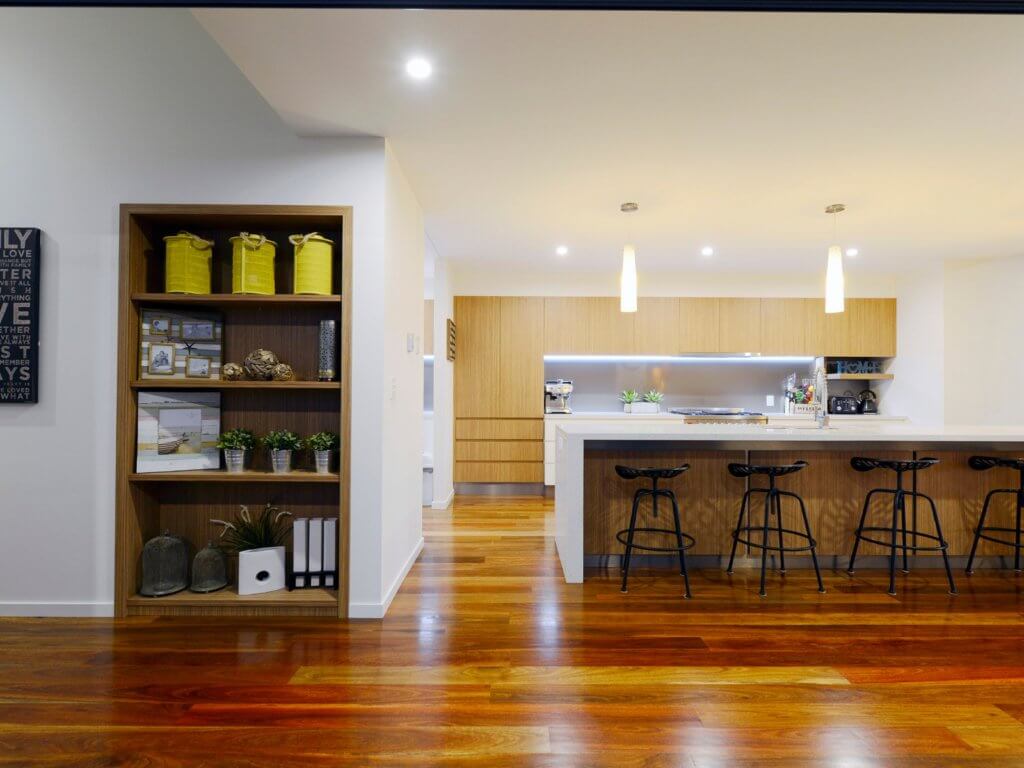kitchen floor sanding in Brisbane uplifts the beauty and value of your home. They add elegance, beauty, and durability, especially in high-traffic areas. The increasing trend of timber floors in kitchens in Brisbane and its suburbs is due to their warmth, natural resilience, and aesthetic appeal. The longevity of these floors depends on the care and maintenance they get through sweeping, sanding, and polishing regularly.
Homeowners have concerns regarding the timber floors in the kitchen, their pros and cons, the installation cost, repair and renewal methods, and maintenance tips. Budget Floor Sanding Brisbane provides an ultimate guide to their kitchen floor sanding and polishing processes and how to retain the exceptional allure of timber floors. Our trustworthy team is professional in transforming old, worn-out, and damaged kitchen timber floors into an immaculate masterpiece that will last long.
Timber Floors In Kitchens- An Epitome Of Beauty And Class
Timeless appeal
Timber floors never get out of fashion. They impart luxury and class in residential spaces, commercial buildings, business property, or public places. Advancements in timber flooring types, styles, and installation techniques are continuous, and we can see something new and fascinating every day. The timeless appeal of timber floors in the kitchen draws the attention of the guests and is pleasant and comforting for residents.
Durability
Timber floor durability is consistent with the type, quality, and grade of the wood and precision of floorboard installation by a professional. Oak, Jarrah, Merbau, Walnut, and other high-quality woods are the perfect source of timber for floors in high-traffic areas of the home. They are long-lasting, resilient, and require minimal maintenance through sanding and polishing. Classic timber homes in Queensland stand the test of time and are proof of the durability and sturdiness of the solid hardwood floors.
Sustainability
Timber has a lower carbon footprint than other flooring materials and can be reused or recycled in many ways. Eco-friendly and sustainable flooring is ideal for conserving natural resources by reducing carbon emissions. People can benefit from reclaimed wood instead of sourcing new timber for their homes. Old timber floorboards are applicable as table tops, countertops, small cabinets, and decorations.
Sanding And Polishing Kitchen Timber Floor
Kitchen floors are subject to spills, scratches, and dents from dropped utensils and high traffic. An internal leakage in the subfloor pipes can cause the floorboards to swell, resulting in crowning at places. Floor sanding removes the damaged top layer of the wood, eliminating dents, scratches, and stains. For severe damage, it is sometimes imperative to replace the floorboards.
Process Of Sanding
Budget Floor Sanding Brisbane offers their services for all the timber floor-related issues in your kitchen and other spaces in the house. Our team divides the process into sections to ensure a smooth workflow without disturbances.
The sanding of the kitchen floor comprises the following steps:
Preparation of the area- The sanding process commences with cleaning the floor with a broom or a dry mop and removing obstacles such as furniture, kitchen appliances, and ornamentals.
Progressive sanding- A coarse-grit sandpaper removes old stains, finishes, scratches, and other surface damages. The process progresses through the use of fine grit sandpaper for a smooth and sleek surface. The process follows cleaning the floor through a vacuum to remove dust from sanding.
Process of Polishing
Floor polishing enhances its appearance and protects against spills and scratches. The polishing process follows the floor sanding and cleaning. It is crucial to have a clean floor before polish application as dust and wood grain will result in patchy finishing of the coat.
The first coat of polish takes a drying time of 72 hours for proper penetration in the wood grains of the floor. The second coat of finish is applied after the first coat dries to ensure an even spread on the area.
Types of polishes for kitchen timber floor:
A good polish gives a beautiful, long-lasting finish that will last long. Floor finish is selected based on styles, environmental needs, and personal preferences. Following are some of timber floor polishes:
- Water-Based Polyurethane
- Oil-Based Polyurethane
- Wax Finish
- Hardwax Oil
Oil-based finishes give a glossy appearance but take longer to dry than water-based. Proper finishing of the timber floor protects it from surface wear and tear and moisture exposure. In some cases, there is no need to sand the floor, re-coating with a good finish is sufficient to bring back the floor charm.
Frequently Asked Questions About Kitchen Timber Floor Sanding And Staining Brisbane
How much time does kitchen floor sanding and polishing take?
The length of time for timber floor sanding and polishing in the kitchen depends on the area and the extent of damage. Usually, it takes 2-4 days to sand the kitchen floor.
Which polish is best for the kitchen floor?
Water-based Polyurethane finish is best for the kitchen floor, as it dries quickly and provides resistance to moisture and scratches.
What is the required frequency of polishing timber floors?
For high-traffic areas, polishing every 2-3 years is sufficient to keep the shine and protection. For low-traffic areas, a good polish can last for up to 5-6 years.
Why should I hire Budget Floor Sanding Brisbane for my flooring issues?
Budget Floor Sanding Brisbane is a professional team of sanders that can assess timber floor problems and bring solutions in no time. Our eco-friendly practices, expertise, and use of quality materials are the reasons to rely and trust on our approach.
What are the strategies to prevent moisture damage to timber floors?
The practices to prevent water damage to kitchen floors are:
- Clean the spills immediately to prevent penetration in the wood grains.
- Routinely inspect the drainage system under the sink and the subfloor to avoid water-pooling.
- Use kitchen rugs near the sink to absorb water splashes from dishwashing.
